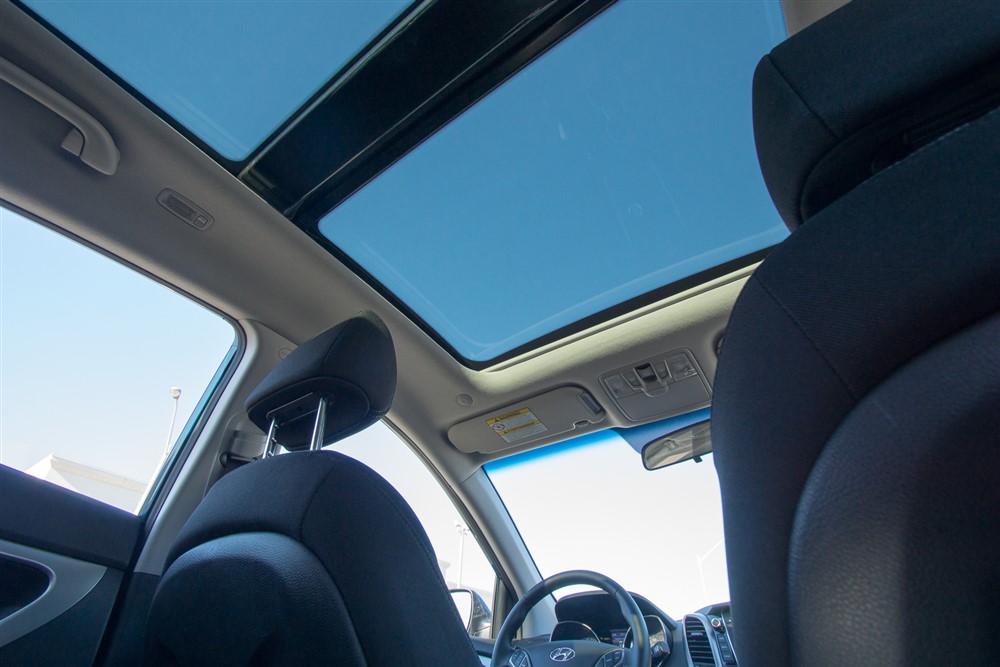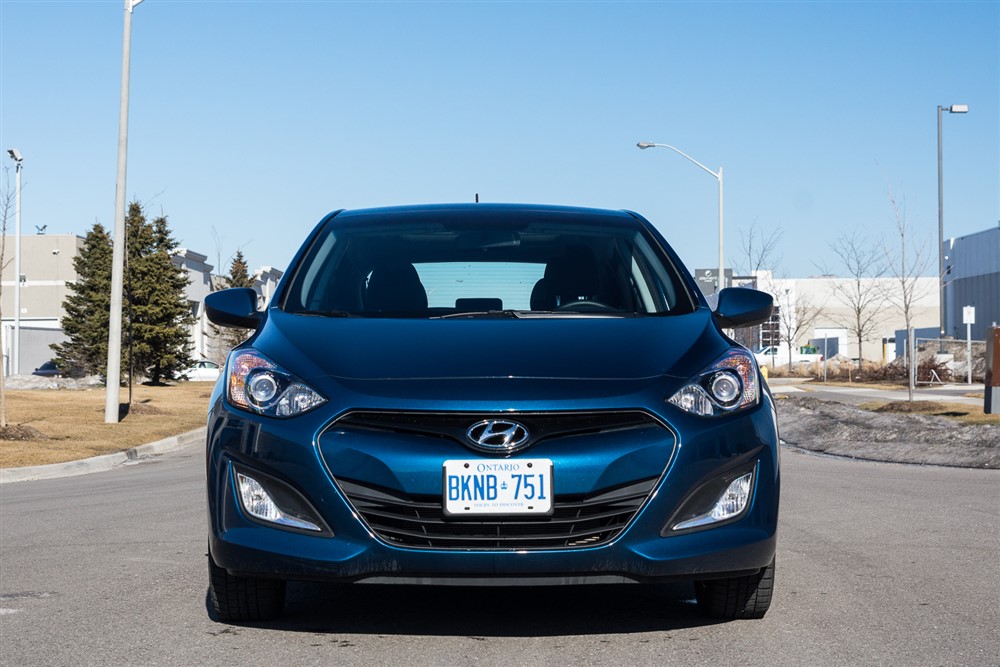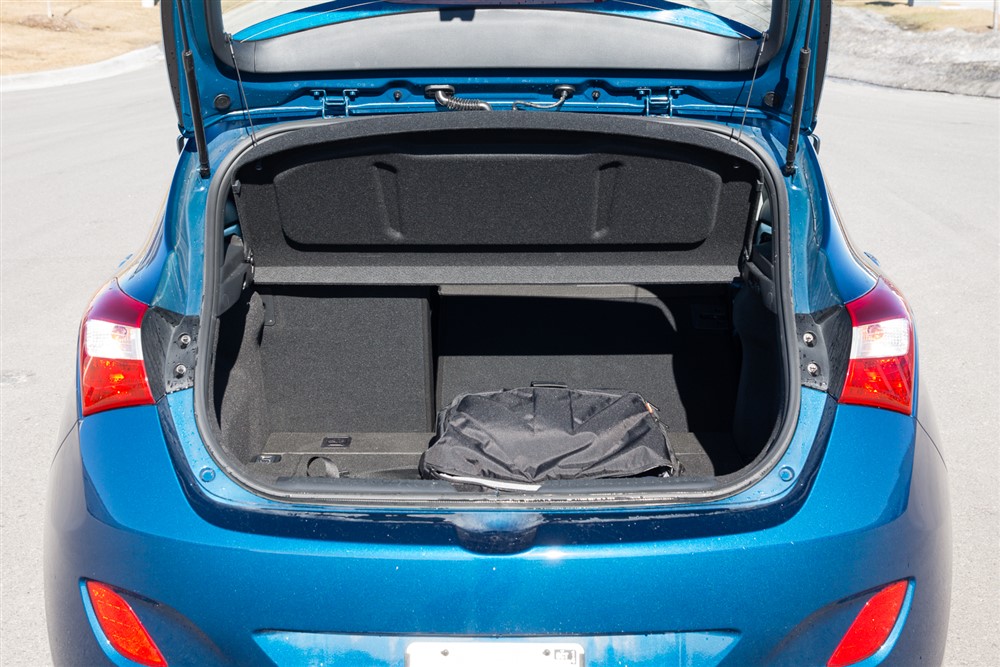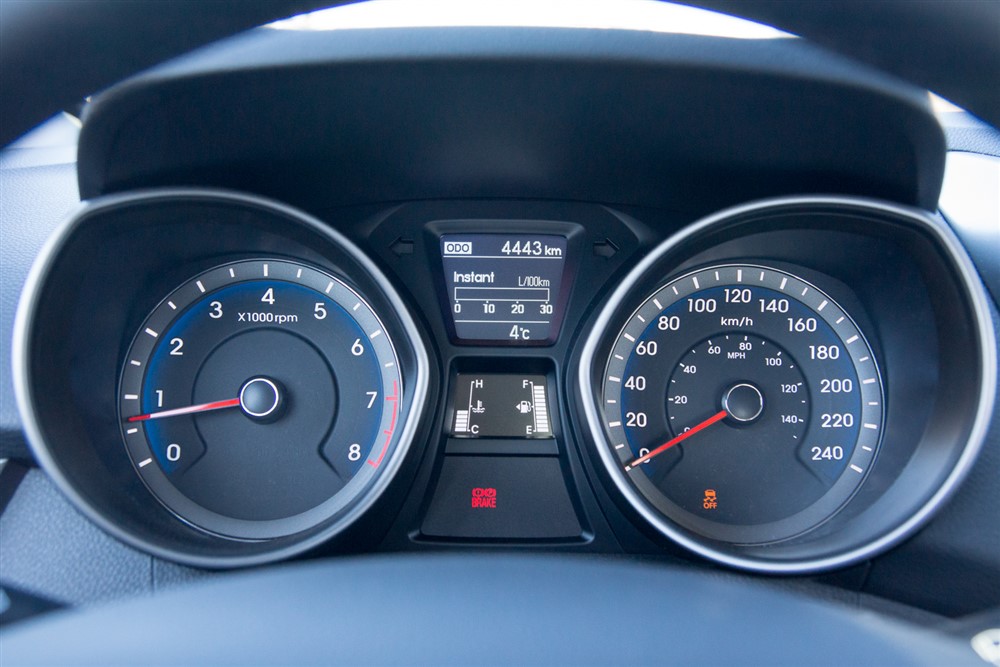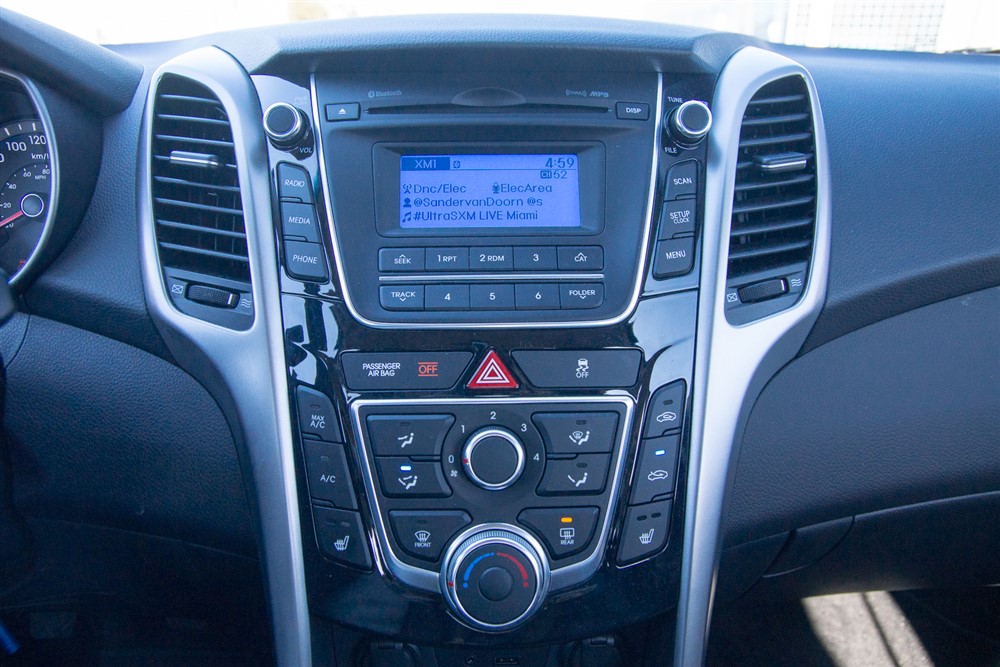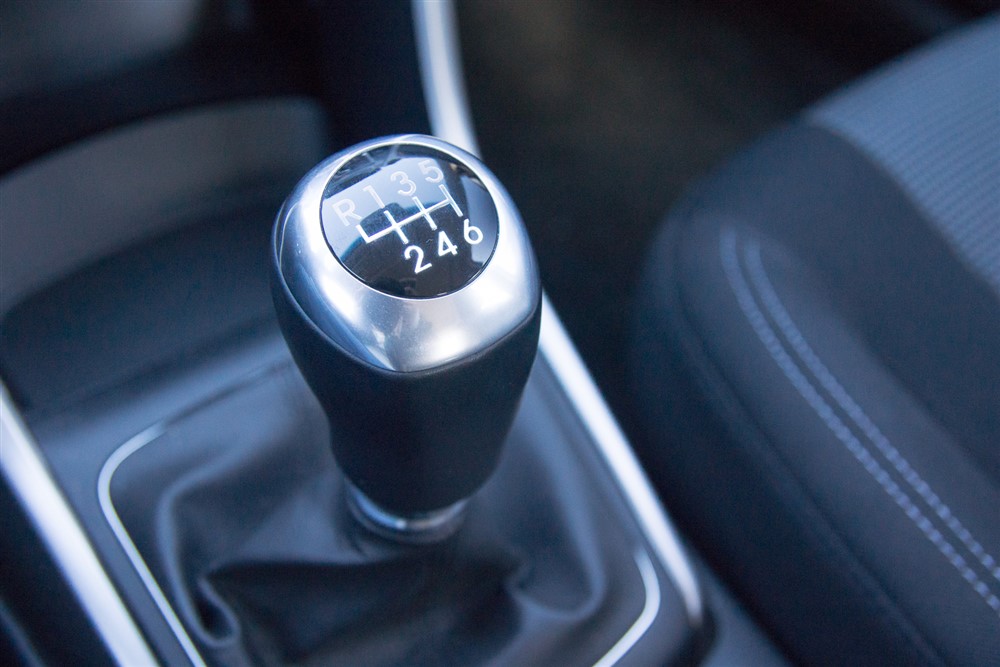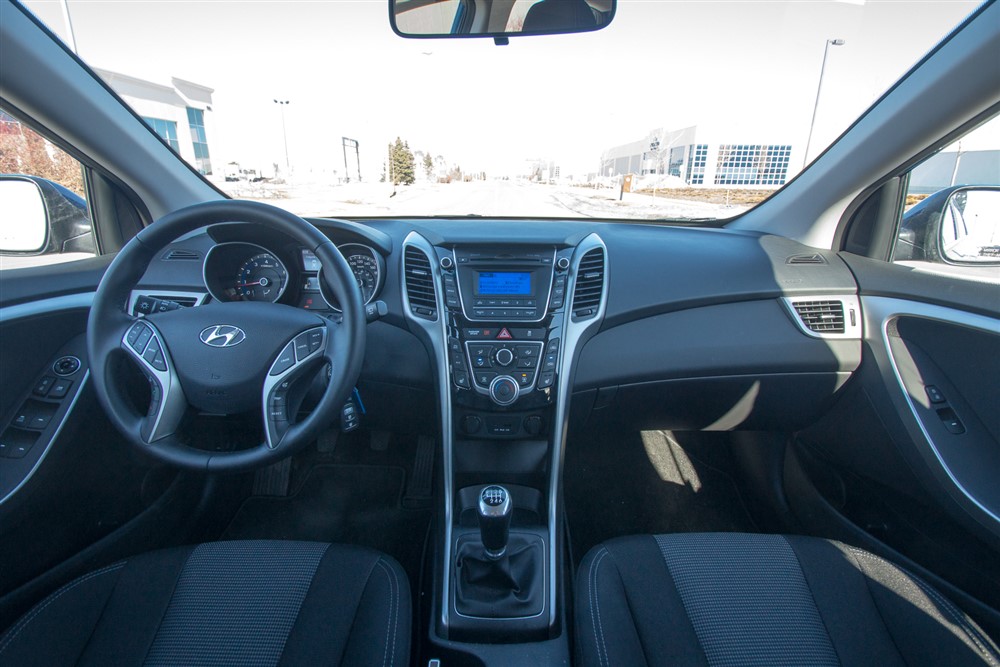The Hyundai Elantra nameplate has been around longer than a lot of people may realize. The earliest Elantra, dating back to about 1991, was quite a far cry from Hyundai’s current compact offering. Many of the usual issues plaguing a growing automaker were evident in their early models. What surprised everyone, however, is how far and how quickly they have come in those twenty years. Nowadays, the entire Hyundai lineup is one to be taken seriously, from the diminutive entry-level Accent to the premium Genesis and Equus sedans. Hyundai has diversified their lineup – one way is by splitting up the Elantra line into three distinct bodystyles: traditional sedan, stylish coupe, and versatile GT hatchback. I picked up the keys to a 2014 Hyundai Elantra GT in GLS Manual trim and went on my way.
The overall look of the Elantra comes from Hyundai’s Fluidic Sculpture design language that is most obvious in the current Sonata. However, when the Elantra GT hatchback was announced, I thought it became the best-looking child in its family. Up front, the halogen projector headlights are a defining feature, and the unique GT-only front grille is much larger than even the one on the sporty Coupe. You can see the family link in the front-end with the Sonata Hybrid and the Genesis Coupe. The swoopy side profile works to accentuate the hatchback proportions, and the wheel overhangs are short. While it is not an honest-to-goodness wagon like the old Elantra Touring (up until 2012), the hatchback retains its useful configuration with a large (but raked) tailgate and lots of space for your stuff inside. Fold down the rear seats and you’ll be able to carry a ridiculous amount of things.
Once you’ve finished loading up all your precious cargo, you’ll be greeted with a very bright interior, thanks to the generous amounts of glass in every direction – including above you. The ultra-large panoramic sunroof is a unique (and my favourite) feature for its class and does a great job brightening up the cabin. My GLS tester didn’t come with every single feature available, but comes with pretty much everything you need, aside from satellite navigation. Heated cloth seats, the aforementioned panoramic sunroof, and power everything – including the driver’s seat. Quality of materials is pretty good – lots of soft-touch plastics along the tops of the doors and dashboard, and soft-cloth inserts elsewhere. Even the door-closing sound is pretty impressive. Skipping satellite navigation in the Elantra GT means you are left with a smaller multi-function screen to control phone and audio features. While the screen does the job, I found it a little bright at night, reflecting off the windshield. You do have the option to turn down its brightness, but it’s also linked to the instrument cluster.
Hyundai’s Driver Selectable Steering makes a return on the Elantra GT. The theory behind it is sound, but serious enthusiasts shouldn’t get too excited – the “Sport” setting only firms up the weighting of the steering but doesn’t do very much for the feedback you can feel. People looking for effortless parking can choose the “Comfort” setting which allows for feather-light fingertip control – great for busy parking lots over the holidays. Kudos for Hyundai for giving people the choice. Elsewhere on the car, the suspension also doesn’t make any claims to the “GT” moniker. Springs and damping are soft, clearly tuned for a comfortable ride. Body motions over large transitions can sometimes be a little exaggerated at times, but it’s not a deal-breaker. The Elantra GT is no sports car, so your expectations should reflect this.
Under the hood lives a new 2.0L gasoline inline-four engine, good for a healthy 173 horsepower at 600 0rpm and 154 lb-ft of torque at 4700 rpm. An upgrade over the previous 1.8L engine, power is up by 25 horsepower and 23 lb-ft, but fuel economy largely remains the same. Power output is more than adequate once the revs come up past 3000rpm. My GLS test car came equipped with a six-speed manual transmission. Unfortunately, if you’re looking to combine the stick-shift and the additional features seen in the higher-end SE and SE Tech trims, you are out of luck as those are only offered with the six-speed automatic transmission. That being said, the manual transmission isn’t too bad to use and is naturally the choice of the enthusiast. The engagement point is not always easy to find by feel alone. I would go as far as describing it as feeling a bit like a video game’s virtual clutch. The shifter, like the clutch, isn’t too bad to use, but a more precise linkage would be nice. I found myself going from 2nd to 5th gear every once in a while. My feelings are based on my recent test of the 2014 Mazda3 GS with its excellent six-speed manual, so your own results may vary.
Hyundai rates the manual transmission Elantra GT in GLS trim at 8.5L/100km in the city, 5.8L/100km on the highway, and 7.3L/100km in a combined cycle. With a fairly religious regimen of following the upshift suggestion points in the instrument cluster, I managed 8.6L/100km with lots of driving in the city over 500km. This is about middle of the road, and very close to Hyundai’s ratings, but my own results do not put it at the top of the class for overall fuel efficiency.
There are several elephants in the room in this tightly-contested class of compact hatchbacks, but the Elantra GT has its own merits. I quite liked the roominess of the cabin and the panoramic sunroof, as well as the handsome exterior. Even within the Hyundai family, the Kia Forte5 offers similar packaging, but in a more attractive external package and more modern powertrains if you spend a little bit more money. In terms of money, my Elantra GT GLS tester comes up at $21,699 before all the dealer fees. Like with many of its attributes, its pricing comes in right in the middle of the pack. I’d say it’s worth a look if you’re looking for something non-polarizing, handsome, practical, and worry-free – something a large part of the population is after these days.
2014 Hyundai Elantra GT Gallery


